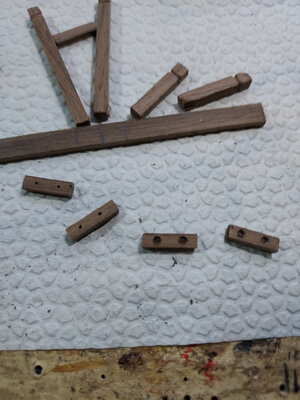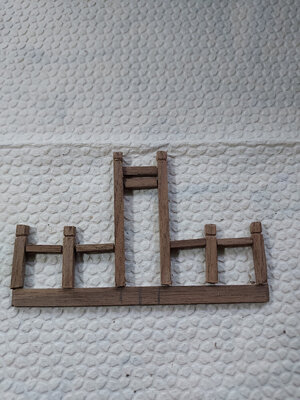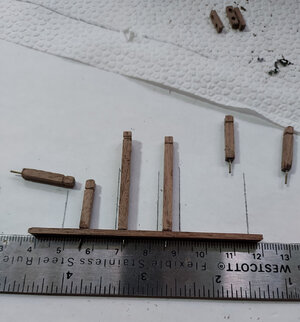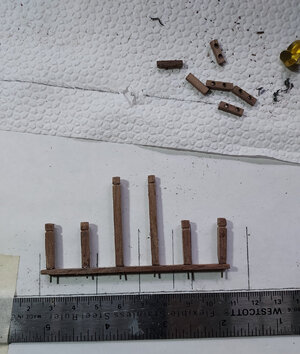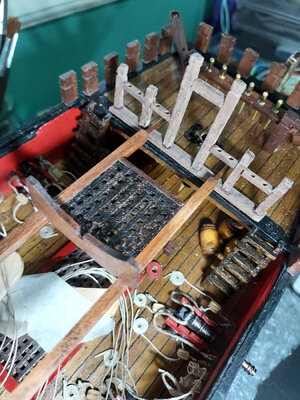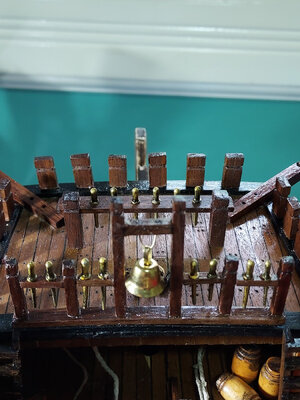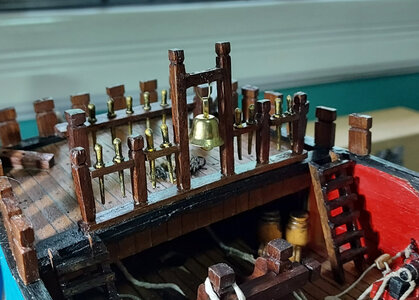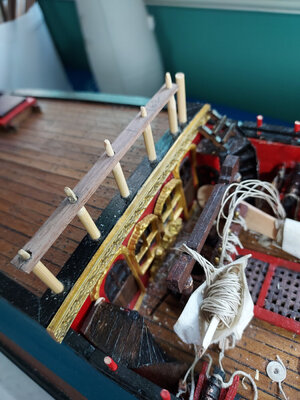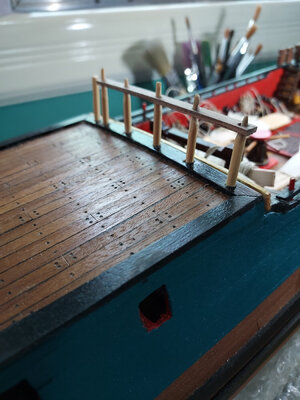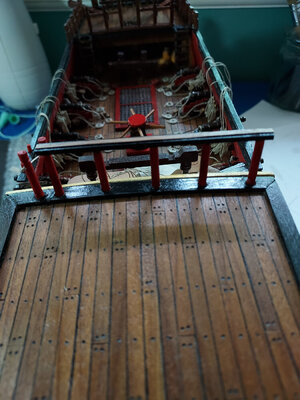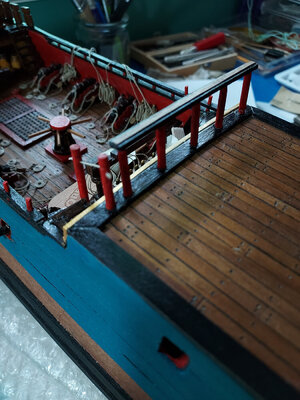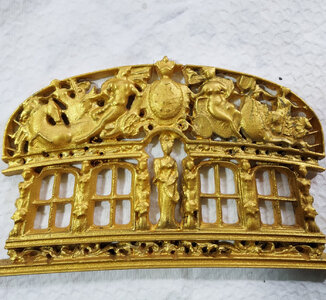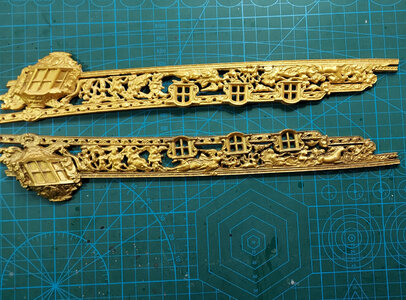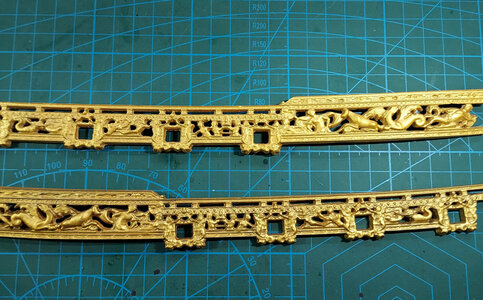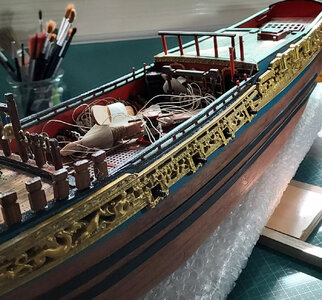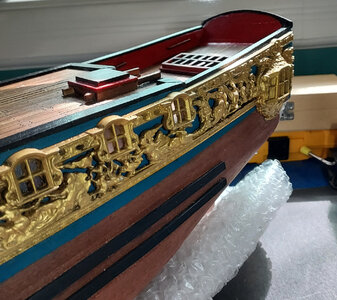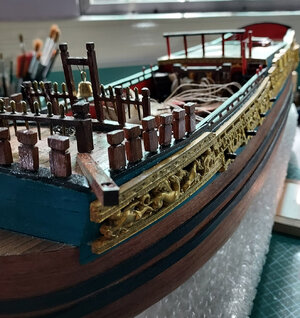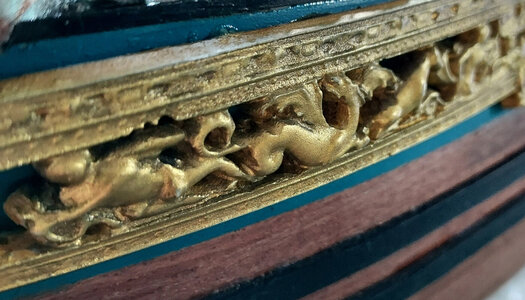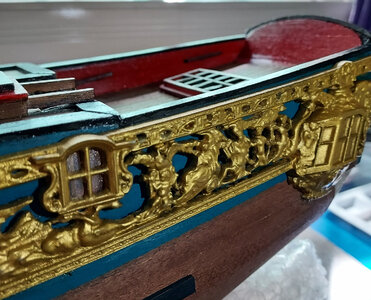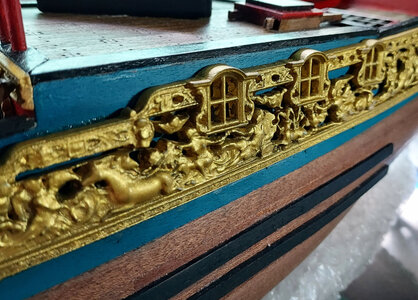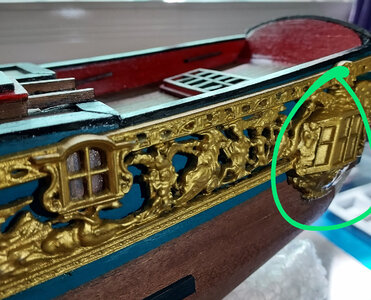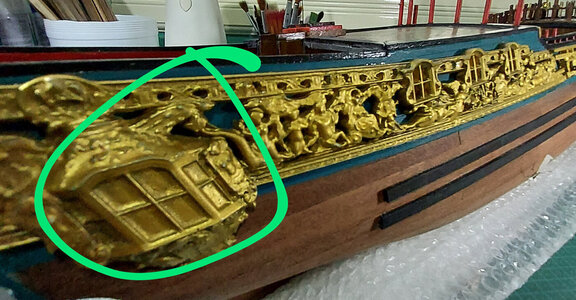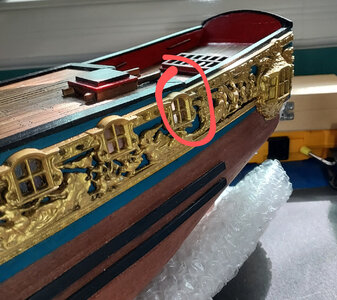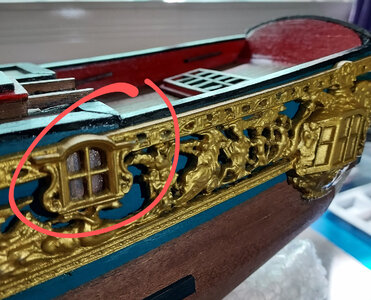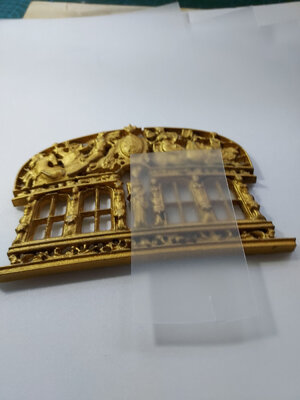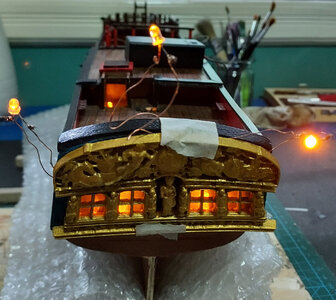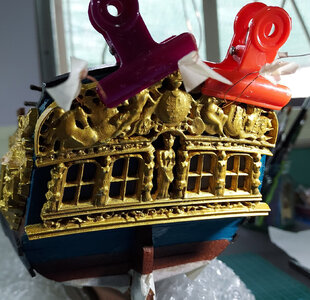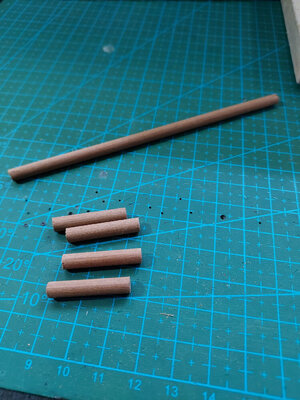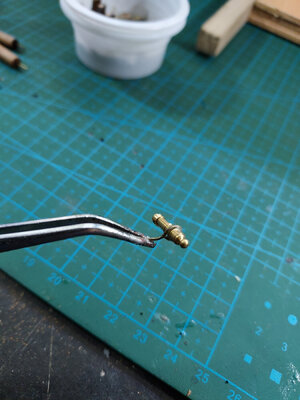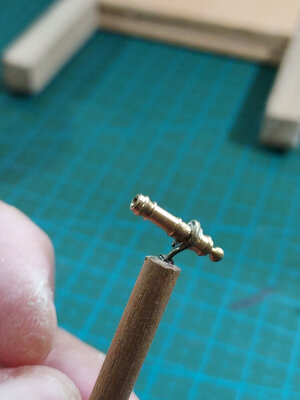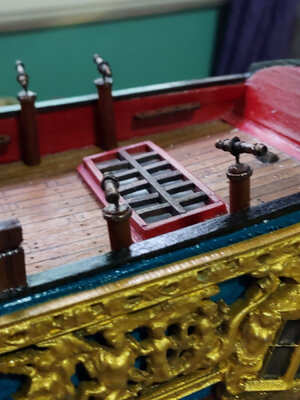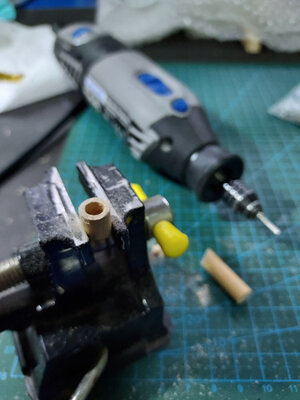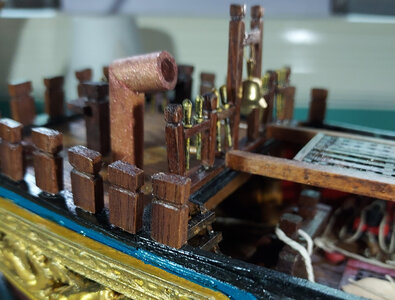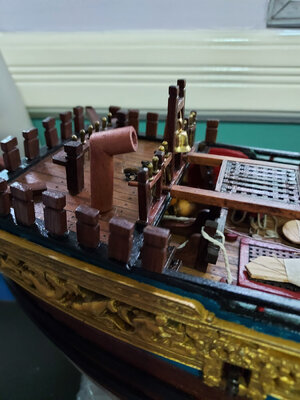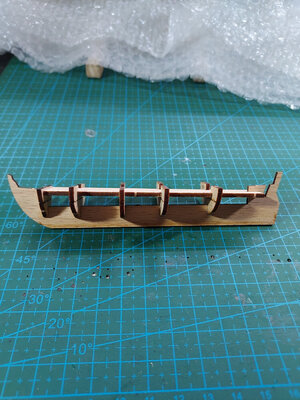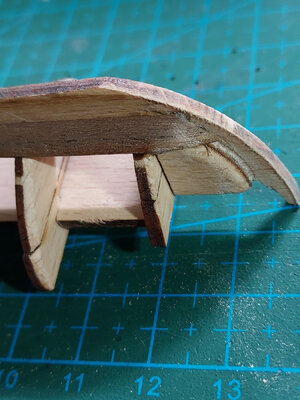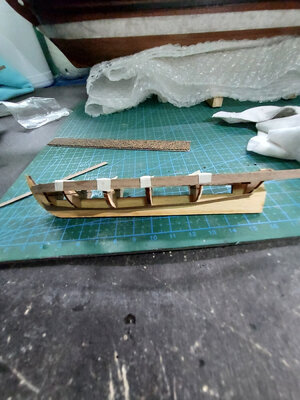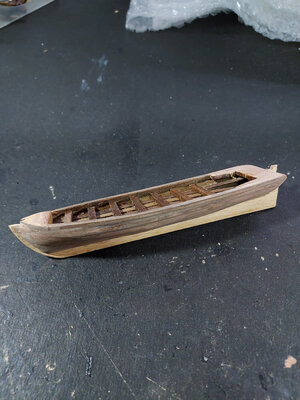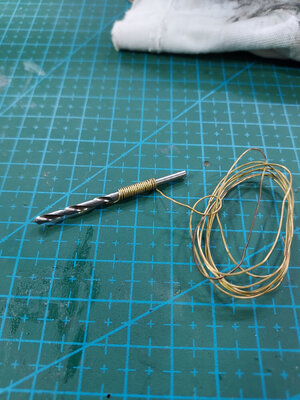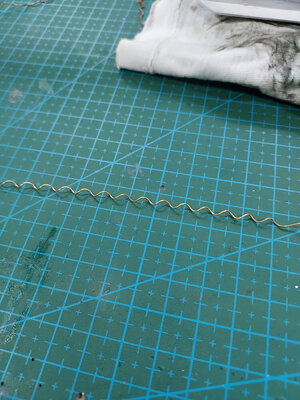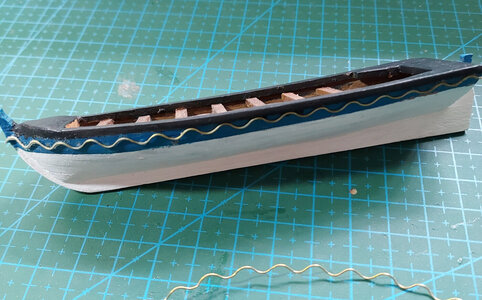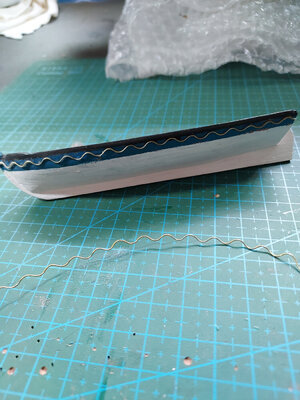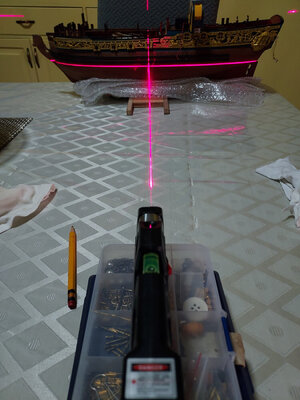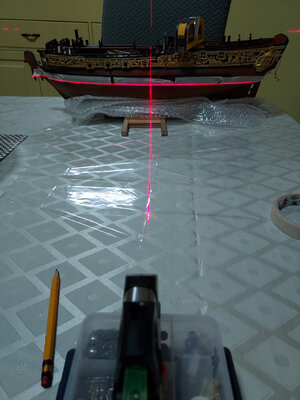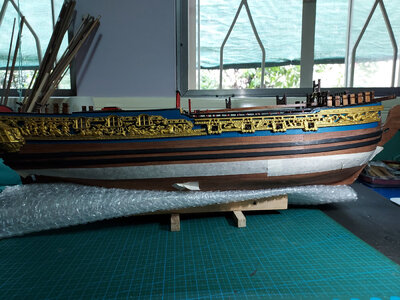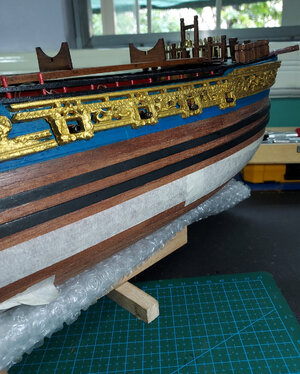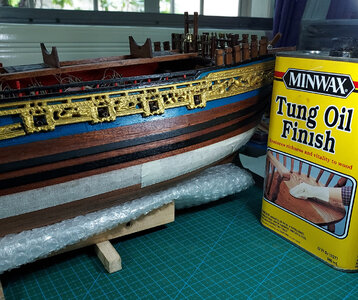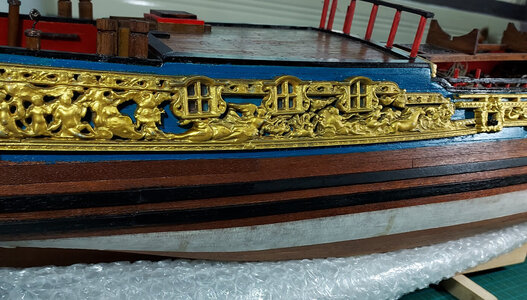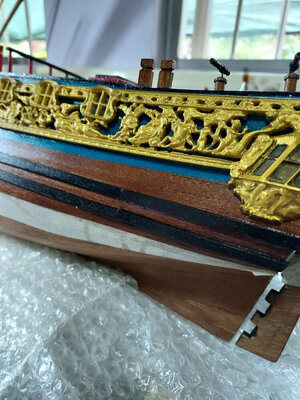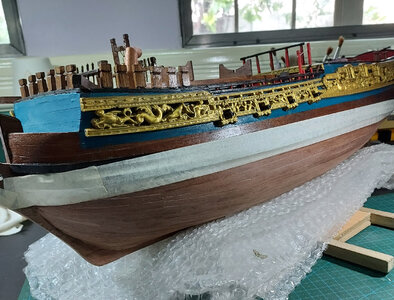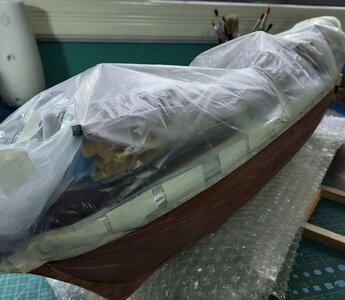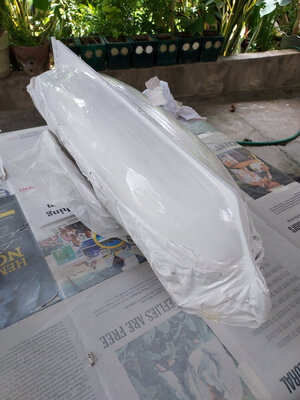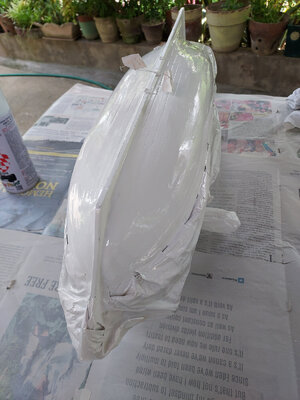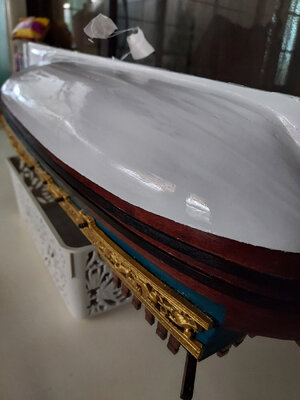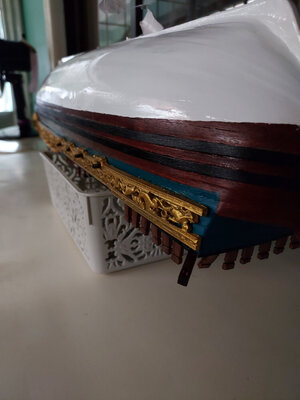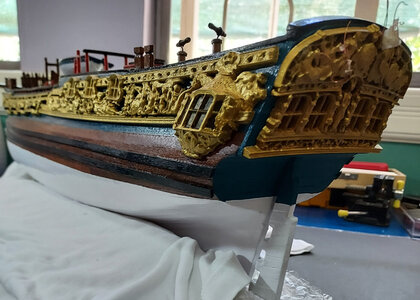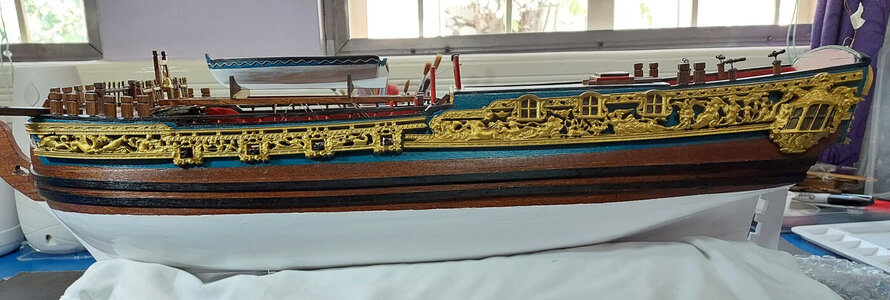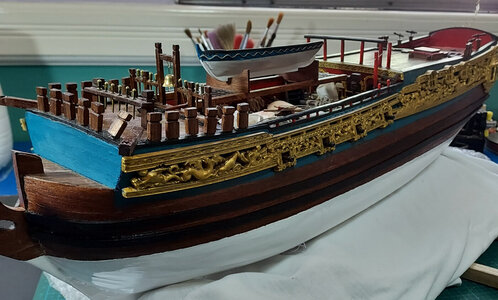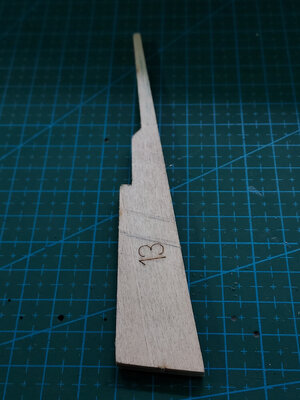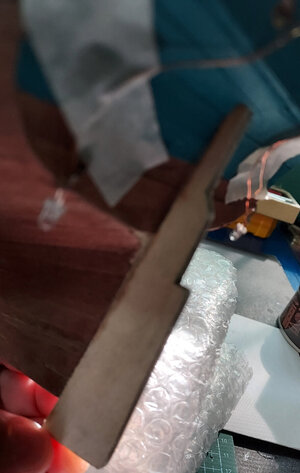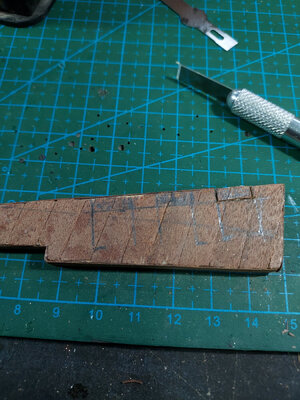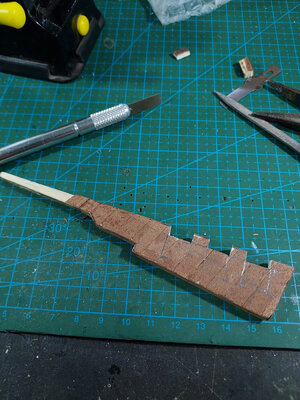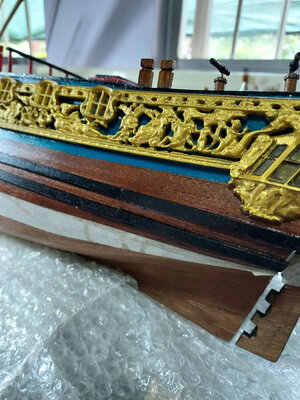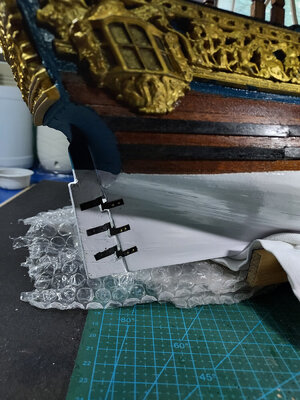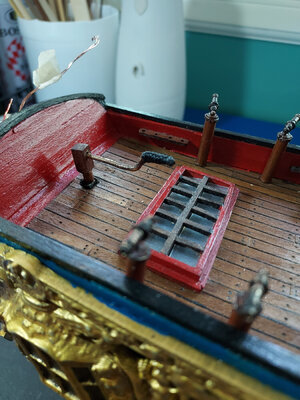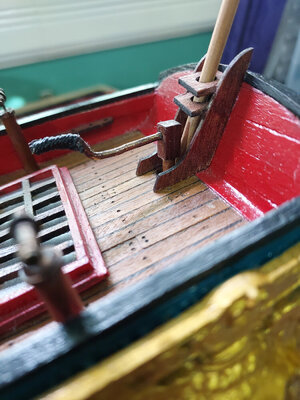Today is a very special day. Good ole Lady Caroline is getting fitted with her golden finery. Granted these resin carvings aren't quite as elegant as the ones in her more exquisite cousin, the 1:30 ZHL Royal Caroline kit or even the fine Panart model. But I have to be content with what I have, and I was quite pleasantly surprised how nicely the carvings added to the overall look of the ship. Perhaps nowhere near historically accurate, but will have to do for now.
In a prior post, I discussed how I prepared the resin carvings and painting them gold. I was debating whether to apply a very light dark wash, since I initially thought the wash dulled the sheen of the gold somewhat. But, after much thought, and heeding the advice from some friends in the forum, I decided to do the wash, using diluted black acrilyc paint.
The pictures below show the comparison between the washed portion vs the unwashed. The right side is the washed portion.
View attachment 247363
In the following pictures, the bottom pieces are washed.
View attachment 247365View attachment 247364
The difference is very subtle, but the washed pieces definitely look better... a bit more definition and deeper details.
Gluing them to the hull was quite a challenge. Earlier (before I painted them), I molded the resin to the contours of the hull by heating them with a blow dryer and clamping them to shape.
I used contact cement initially, but later discovered that the contact cement wasn't strong enough to hold the pieces in place. There was still a bit of pull and resistance when I fitted the resin pieces. Even with clamping and waiting several days to dry, I found certain spots were peeling off. So I supplemented the contact cement with CA gel glue at the stress points. So far so good.
Here are some pictures.
View attachment 247367View attachment 247368View attachment 247369View attachment 247370View attachment 247371View attachment 247372
Initially, I wanted to open up the gallery windows by drilling the area highlighted in green. I wanted to put LED lights inside the gallery, but later changed my mind. The resin piece was really thick, and I felt I didn't have the skills and the knowledge to carve out the windows cleanly. So I left them as is, and just painted the window panels with a somewhat dark shade. You can see this in a later picture.
View attachment 247375View attachment 247376
One thing I need to point out about the resin piece is that one of the windows in the mid section is poorly designed. As can be seen in the following photo (red highlight), the third window is grossly misproportioned...it is positioned too far back outside of the midship galleries. Oh well, not much I can do but just grin and bear it.
View attachment 247373View attachment 247374
Next I worked on the transom piece. I made things a bit more complicated for myself because I decided to put lights inside the gallery as well as in the lanterns (this wasn't part of the kit instructions).
I glued on a piece of stiff translucent plastic to the back of the window frame to simulate glass
View attachment 247392
I test fitted the transom piece to make sure the windows line up with the holes I carved out earlier.
View attachment 247393
The three LED lights you see just loosely hanging at the rear are meant for the lanterns. At this point in the build, I haven't quite figured out how and where to position the wires. This I have to figure out before I glue on the transom piece.
Eventually I came up with a plan and decided to pass the wires on the top corners and center of the transom. Now I can glue it in place. Later on you will see why it's so important to position these properly for the lantern installation.
View attachment 247391
That's it for now. Hope I didn't bore you too much with the detailed discussion.
Thanks for stopping by.
Continue to be safe my friends.

